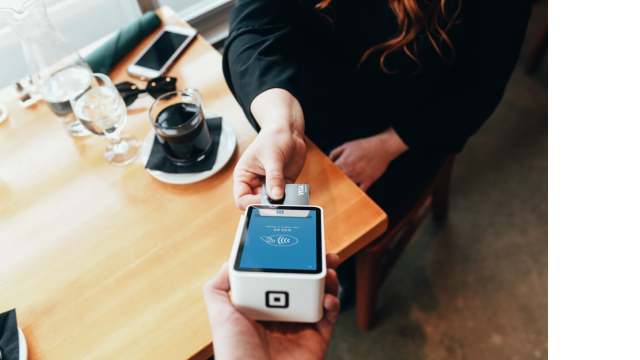What is an RFID Copier?
#
To briefly summarize, Radio Frequency Identification (RFID) is the use of radio frequency waves to wirelessly transfer data. This transfer of data takes place between an RFID tag and an RFID reader, and the data being transferred can be anything from tracking IDs for shipping and retail to personal identification information for physical security and door access.
The RFID tag can take many forms (such as labels, inlays, hard tags, and ID cards/badges), and it’s made up of an antenna and an integrated circuit (IC). The antenna receives radio frequency waves and energizes the IC, while the IC (also referred to as the chip) contains the memory banks, processing information, and various security protocols that communicate with the RFID reader. While RFID systems can vary in complexity, even the most basic of systems contain these two critical components.
RFID technology has a variety of uses and applications, but one of its most common applications is physical security and door access. If you swipe an ID card to get anywhere in your office building, then you have first-hand experience with RFID technology. However, as you and your IT department can probably attest, one of the more logistical downsides of an RFID card system is replacing lost key cards or tags. Whether you use an RFID tag to get into your apartment complex, your office, your storage facility, or to start your car, you may find it worthwhile to have an extra around in case of an emergency.
This is where an RFID copier comes in. An RFID copier (or an RFID duplicator) is a device that copies the data from one RFID tag and imprints it on another, allowing for multiples of the same tag to be created.
How RFID Copiers Work
#
We have already created a helpful step-by-step guide on how to copy or clone a key card or fob. So if you’d like more information on the copying process and the tools you’d need, definitely give that guide a read. In general, depending on the type of key card or fob you have, the process can be completed in as little as three minutes. More secure cards that run on higher frequencies will take a little longer, and the RFID copiers needed to copy higher frequency cards, like HID cards used by many organizations, might be a little pricier. However, the guide also details the additional hardware and software needed to copy these higher frequency cards.
It is worth clarifying, however, that an RFID copier can sometimes be referred to as RFID card copier or an RFID card duplicator, particularly if the copier in question is being used to copy or duplicate RFID key cards. The terms are synonymous, so don’t be confused if you come across them in your search.
The Benefits of RFID Copiers
#
To answer this question, it’s important to look at your overall needs and perform a general cost-benefit analysis. There are companies that can perform the key cloning and copying service for you, but they tend to charge anywhere between $20-$50 per card. While you may find paying someone else to copy your card worthwhile if the quantity of copies needed is small, the cost of a simple RFID copier can be as low as $12 on Ebay, and they usually come with extra writable tags. This means you’ll have everything you need to create multiple copies of your RFID keycards, tags, or fobs at less than the cost of paying a company to make a single copy for you.
There is also the added benefit of knowing that you are in control of your sensitive data. Say you want to make a copy of your apartment keycard or your employee ID tag. If you’re using your own device to make copies of those keycards, then there’s no need to get a third party involved and potentially give those companies access to your or your company’s sensitive identification information.
How to Buy an RFID Copier
#
There are a plethora of options available that are only a quick search away. Amazon, Ebay, and Alibaba are a good place to start, but it’s also good to take a look at the type of RFID tag you have to help you narrow your search results. For instance, if you have a 125KHz tag, this RFID copier is really all you’d need to get the job done. Bear in mind, however, that it’s not a one-size-fits-all situation. If your RFID tag runs off of a 13.56 MHz frequency, then a 125KHz copier won’t be powerful enough to create duplicates due to the amount of bits that need to be transferred. Again, we cover this in more detail in our how-to guide, but be sure to double-check the specifications of your keycard before placing your order.
RFID copiers that can copy 13.56 MHz cards are a bit more expensive, such as this one on Amazon, and there might be a little of software-related legwork needed on your part. However, bear in mind that sending a 13.56 MHz card to a third-party company to copy also comes with a significant jump in price as well.
It’s also recommended that you consult the IT department of your apartment, office, or wherever you use a key card prior to making copies. For one, they can provide information on the technology they use in their RFID systems, which could prove helpful as you shop for your RFID copier. More importantly, however, they can inform you of the rules of their organization regarding making keycard copies, or give you tips on how to ensure sensitive information remains secure.
If you’re interested in Kisi’s keycard and mobile access solutions, check out this overview of our products and services. If you are more interested in how access systems work then download our free PDF guide.




